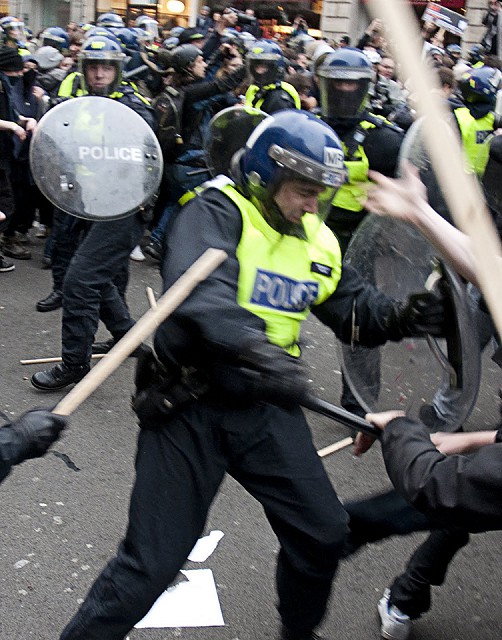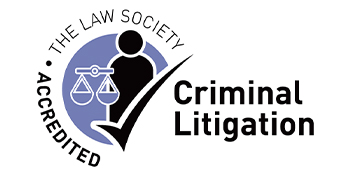STRAIN
A'I GWMNI
AND COMPANY
14A Stryd Penlan, Pwllheli, Gwynedd

Public Order - New Sentencing Guidelines

Date: 2019-10-17
New sentencing guidelines for public order offences come in to force for adults sentenced on or after 1 January 2020.
In August 2008, the Sentencing Guidelines Council published Magistrates’ Court Sentencing Guidelines (MCSG) guidelines on sentencing the offence of affray and summary offences relating to threatening and disorderly behaviour provided for by section 4, section 4A and section 5 of the Public Order Act 1986. There was also a brief reference to violent disorder offences which may be sentenced in magistrates’ courts. This guidance did not include guidelines for sentencing these offences in the Crown Court, and also did not include guidance on sentencing the public order offences of riot, or offences relating to stirring up racial or religious hatred and hatred based on sexual orientation.
The offences covered by the public order guideline are relatively high in volume. There were 18,600 offenders sentenced for the public order offences covered by the guideline in 2018. The volume of some offences is however relatively low, in relation to the offence of riot only 30 offenders have been sentenced in the last decade for which figures are available (2008-2018). Around 300 each year are sentenced for violent disorder, and 2400 for affray, the rest being sentenced for the lesser offences.
Will the new guideline affect sentence length?
For the offences of riot, violent disorder and affray, it is suggested that sentence length will not be affected.
For threatening behaviour and disorderly behaviour with intent, there have been some reductions to sentencing ranges and starting points for the different levels of offence seriousness, compared to the MCSG. It is possible that the decrease to sentence levels in the guideline could lead to a decrease in sentencing severity for these offences, whereby some individuals who currently receive a custodial sentence may now receive a community order. However, it is also possible that much of the decrease in sentencing severity could come from offenders currently receiving suspended sentence orders now receiving community orders. Therefore there is an upper estimate that the guideline will not have an impact on the requirement for prison places or probation resources, and a lower estimate that the guideline could lead to a reduction in the requirement for up to 30 prison places per year and a small increase in the use of community orders.
For racially or religiously aggravated threatening behaviour and racially or religiously aggravated disorderly behaviour with intent, sentencers are first asked to sentence the basic offence, and then increase the sentence considering the level of racial or religious aggravation involved. This ‘uplift’ approach reflects Court of Appeal guidance on how aggravated offences should be sentenced, and aligns with current practice in relation to assessing the level of aggravation present in offences. This is the same process as used in the Council’s Arson and Criminal Damage guideline, where the consultation stage research found that there was a risk that the guideline could result in slightly higher sentences. It is therefore possible that the guideline could cause an increase to sentencing severity. However, some of the starting points and sentence ranges for the basic offence are lower than under the current guideline, which could offset these potential increases. Therefore there is a lower estimate that the guideline will not have an impact on the requirement for prison places or probation resources, and an upper estimate that the guideline could lead to a requirement for up to 40 additional prison places per year and a small decrease in the use of community orders.
For the offences of disorderly behaviour and racially or religiously aggravated disorderly behaviour, the maximum sentence is a fine and therefore the guideline will not have an impact on prison and probation resources. For the offence of disorderly behaviour, the guideline introduces a new higher category of offending with a higher level of fine than in the existing MCSG guidance (a Band C fine). The guideline may therefore increase fine values for this offence. Also, because a fine is included for all levels of offending for racially or religiously aggravated disorderly behaviour - whereas data suggests that around 12 per cent of offenders sentenced for this offence received an absolute or conditional discharge in 2018 (after any reduction for guilty plea) – it is also possible that the guideline could increase the number of offenders sentenced to a fine for this offence.
As ever, our advocates will be vigilant to ensure full adherence to the guideline and act to prevent any ‘sentence creep’ which is something that we have observed with other guidelines.
(Image credit: Tomasz Iwaniec; creativecommons.org)
How we can assist?
If you need specialist advice in relation to any criminal investigation or prosecution, then get in touch with Rhys Tudur on 01758 455 500 and let us help. We can advise on all aspects of your case.
Back to view all blog posts.
Our Specialties Include:
> Personal Injury
> Matrimonial & Family Law
> Criminal
> General Disputes & Litigation
Useful Information
> Legal Costs Funding & Appeals
> Resources & Articles
> Accreditations & Awards
> Testimonials
>Private Client Rates
Contact Us
Address: 14A Stryd Penlan, Pwllheli, Gwynedd
Phone: 01758 455500
E-mail: office@strainandco.co.uk

© 2025 Strain and Company. Authorised and Regulated by the SRA firm no 644052. All Rights Reserved. Privacy Notice.
Website by Delwedd.